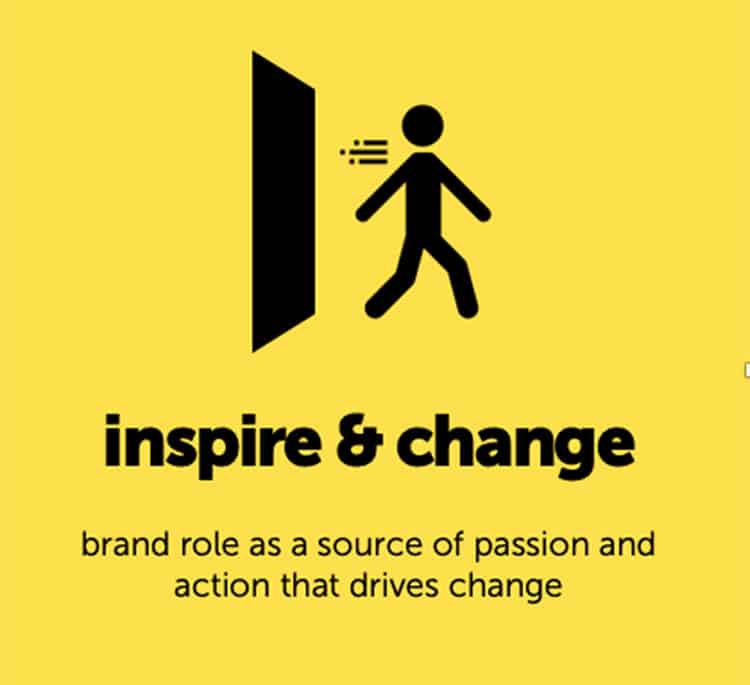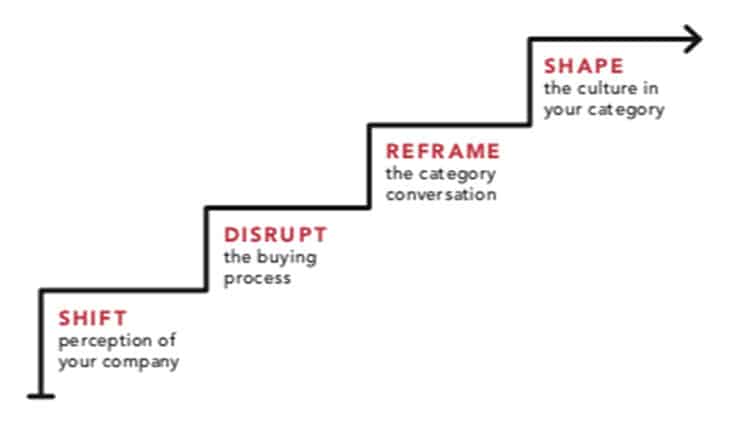Using Your Brand to Drive Change: Taking an Unconventionals View

Many years ago I remember finishing the presentation of a corporate brand campaign to the CEO of a large conglomerate. They needed to update and greatly expand buyers’ perceptions of how their company could address entire workflows, not just build an endless stream of disconnected point products. Three things were in my mind as I pitched the work: this man has an excellent bullshit filter, a short temper, and made $57 million last year.
When I finished, the CEO leaned back, looked at our three creative concepts and then at his executive committee, and began, “This sounds like a great way…”
I leaned forward, my spirits rising.
“…to shoot a big hole through a million dollars.”
We showed ourselves out, though in the end the campaign did get funded for the conglomerate’s other business units.
Fast-forward nearly two decades and the perception lingers in the C-suite that brand is slightly (though not much) more than a vaguely understood set of design standards guiding the correct placement of the company’s logo. As Martin Roll recently observed, “The relationship between brands and CEOs is precarious at best.”
Our experience suggests an enormous, missed opportunity for CEOs to embrace a much more active, change-driven perspective on brand.
Traditionally, brand serves an invaluable role in positioning and aligning your company. As the graphic below suggests, it’s like a foundation you and your company stand on.

Now take a different perspective and flip that foundation vertically, into a doorway. Brand can also be a catalyst that drives change among your employees and in the market.

And why might your brand need to drive this change? As research we do on an ongoing basis with Aberdeen indicates:
BtoB buyers in particular want change, and they want to be challenged. When we ask, “Are you more likely to work with a vendor who challenges the way you currently do business – for example, by highlighting a pain point or organizational weakness you weren’t aware of?” more than 65% answer, “Yes.”
Buyers will alter their purchase criteria for companies that address pain points. More than half of respondents in our research say that would be more likely to work with a vendor who changed their purchasing criteria by addressing a pain point they couldn’t solve before. This is critical because…
If buyers don’t find compelling reasons to purchase, the process stalls. The two greatest barriers to purchase approval in today’s organizations are lack of clarity around what the company needed (32.8%) and indecision (27.9%).
Finding the right role for a brand often comes down to answering one question: what kind of change will drive it forward? We see change possible at four levels: perception, buying process, category conversation, and the entire category culture.
The first level, shift perceptions, is the most typical goal, but also the least likely to make an impact. Clients talk about the need to improve their reputation, for example, but the way to get there is often to aim for higher-level change. To do that, we often use a diagnostic tool called The Change Ladder to define the level of effort clients need to put behind their brand in meeting their objectives.

At the disrupt the buying process level, you can use your brand to:
- Redefine table stakes in the industry to show your brand easily exceeds these requirements
- Demonstrate how competitors are only addressing symptoms of the core problem
- Set the requirements for success in a way that makes competitive approaches look anemic
At the reframe the category conversation level, you can use your brand to:
- Help break out of communication ruts the way Virgin and Air New Zealand set a new bar for airline safety videos
- Uncover and act on blind spots no one else is addressing; e.g., unbanked Americans who pay high fees and interest because banks don’t address their needs
- Break taboos in a space and set yourself apart for years. Progressive Insurance or AFLAC, anyone?
The top of rung of the ladder, Shape the culture in your category, is clearly the toughest. But brands do it all the time. Waze, for example, has transformed the culture of commuting through crowdsourcing, but also launched programs like Connected citizens to partner with cities, transportation authorities, and first responders.
And as my colleague Mike O’Toole and I discovered in researching and writing our new book, The Unconventionals, there are plenty of companies using their brand to drive change in ways that would have been inconceivable 20 years ago. For example:
- Story: an ever-changing retail space that combines store, gallery, and magazine – and was recently purchased by Macy’s, which just launched 36 Story concept shops across the U.S.
- Everlane: affordable, high-quality clothing basics with a completely transparent supply chain and culture
- WHOOP, whose next-generation sports band is all about diving deep into athletic performance data by balancing exertion recovery, strain, and sleep to unlock human potential.
As we see it, the evidence is in—today’s most innovative companies are building brands that not only drive purchases but inspire real cultural change. And what marketer or entrepreneur out there doesn’t dream of doing that?
Have you read?
# Global Passport Ranking, 2019.
# GDP Rankings Of The World’s Largest Economies, 2019.
# Most Expensive Countries In The World To Live In, 2019.
# Countries With The Highest Average Life Expectancies In 2030.
# The World’s Best Performing Companies 2019.
Bring the best of the CEOWORLD magazine's global journalism to audiences in the United States and around the world. - Add CEOWORLD magazine to your Google News feed.
Follow CEOWORLD magazine headlines on: Google News, LinkedIn, Twitter, and Facebook.
Copyright 2025 The CEOWORLD magazine. All rights reserved. This material (and any extract from it) must not be copied, redistributed or placed on any website, without CEOWORLD magazine' prior written consent. For media queries, please contact: info@ceoworld.biz








